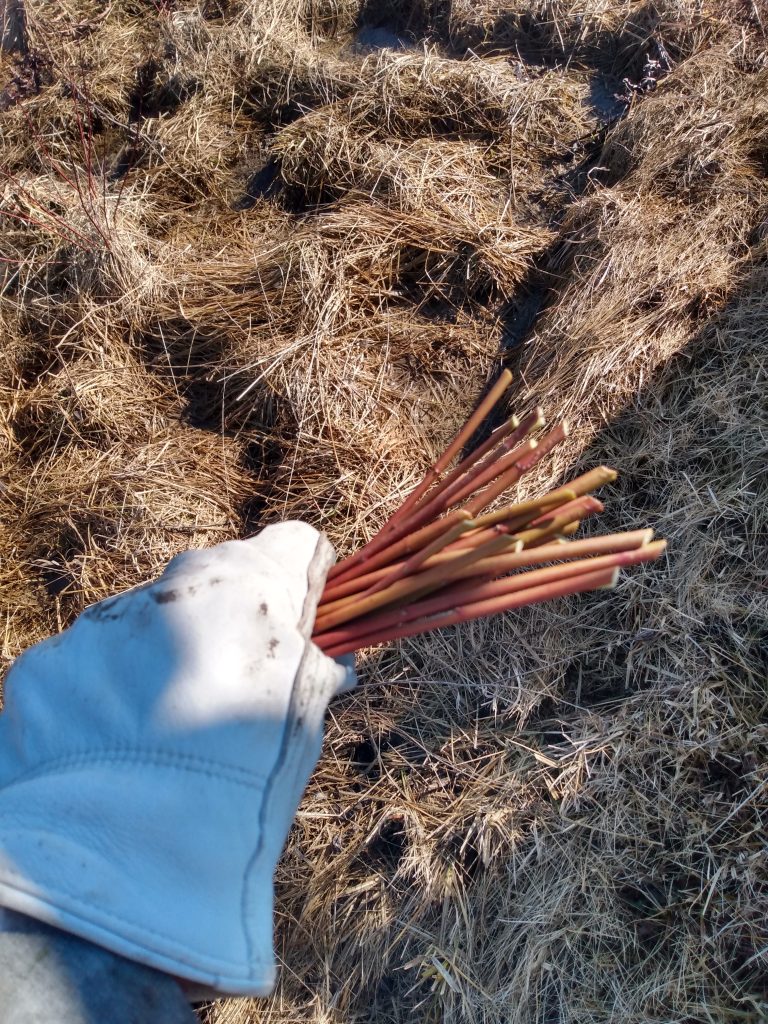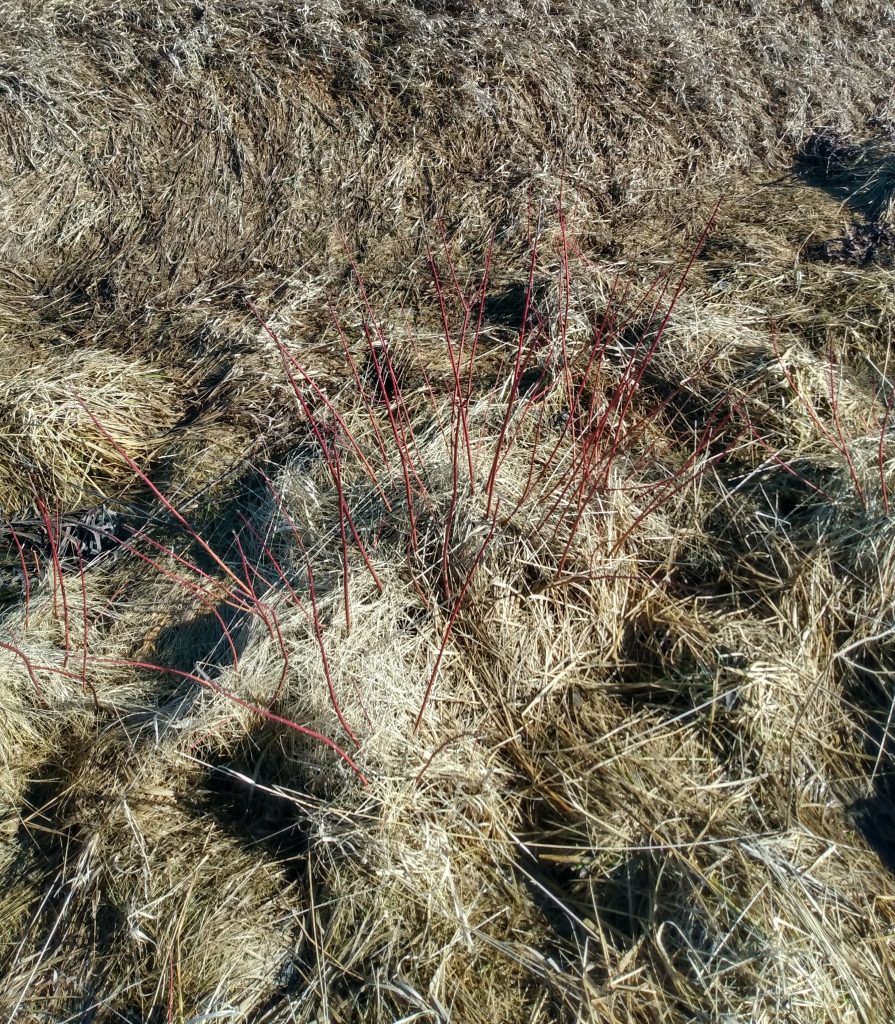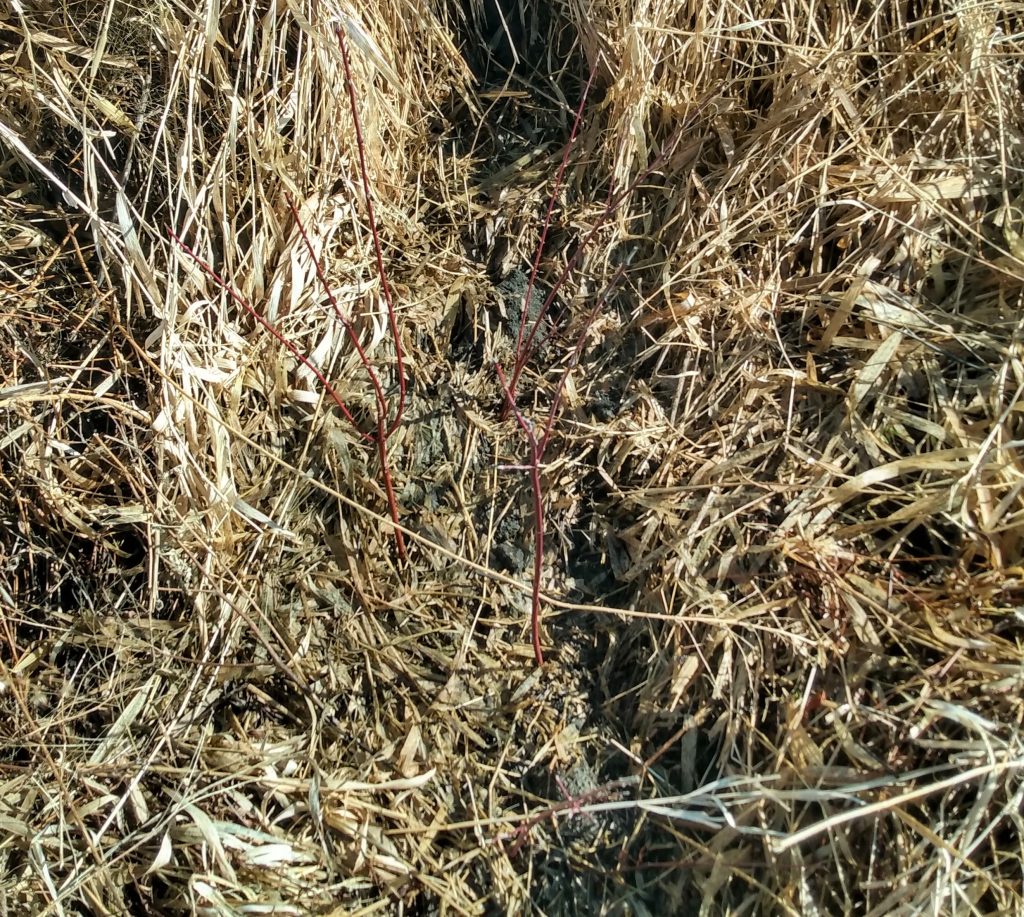3/02/22
I have a long list of habitat and hunting updates to do on the properties I will be hunting this fall. So far, I’ve only replaced one hang on with a more permanent ladder stand, and I’ve loosened two hangon’s. In 2022, I will be taking over the farming here at the home farm so I’ve been spending the last few weeks clearing trees and brush from a fence line so that I can farm closer to that line, and with the unseasonably warm weather, I’ve been updating the old Deere 7000 planter to make sure it is ready for spring planting.
I did have time to take a quick scouting break to see just how tall the switchgrass was behind the house for year two of it’s establishment. It looks great! And, I did a little brush clearing along a different fence line I plan on fixing up so establish another fence jump. That fence is in good enough condition to contain cows, but it is too low to funnel deer to any certain spot for crossing. That will change by just adding a couple barbed wires on top.
As far as my schedule, I think next week for me will start some more hard core habitat work on the farms. When I do it, I’ll post it here.
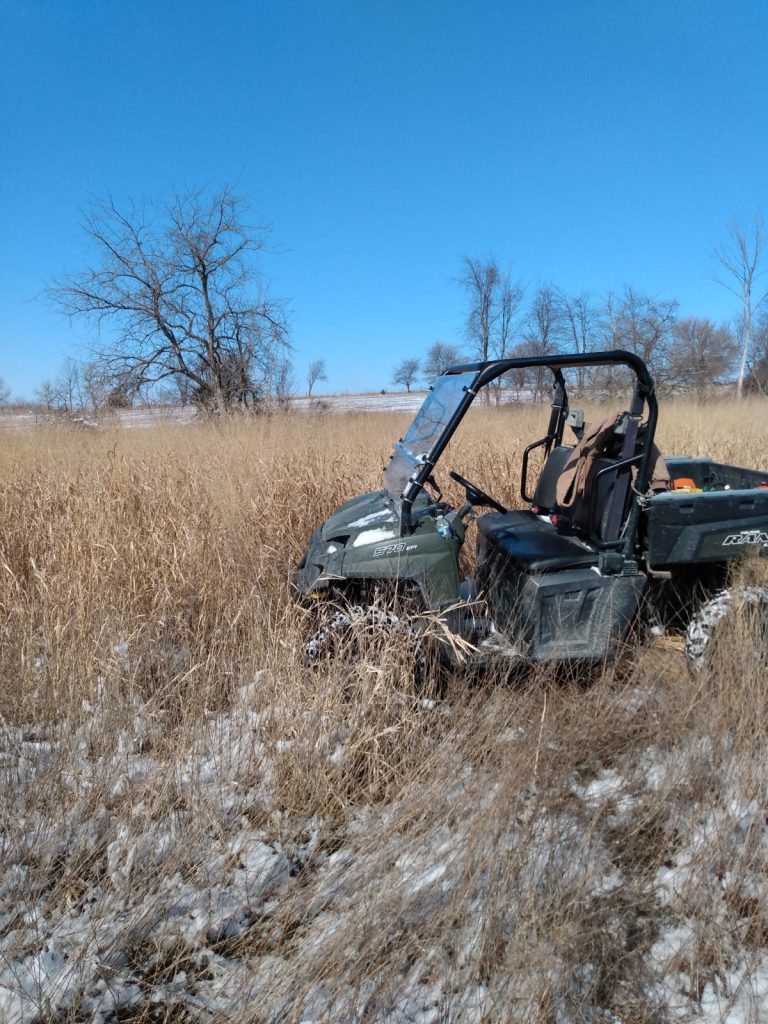
This is 2 year old cave-in-rock switchgrass planted behind the house in our bottom ground. There was just reeds canary grass in here before. Reeds canary lays down in falll giving very little cover. In the back ground is the CIR switchgrass here at the end of winter still holding strong and averaging 4-5 feet tall. In the foreground is just weeds where some red dogwood is planted.
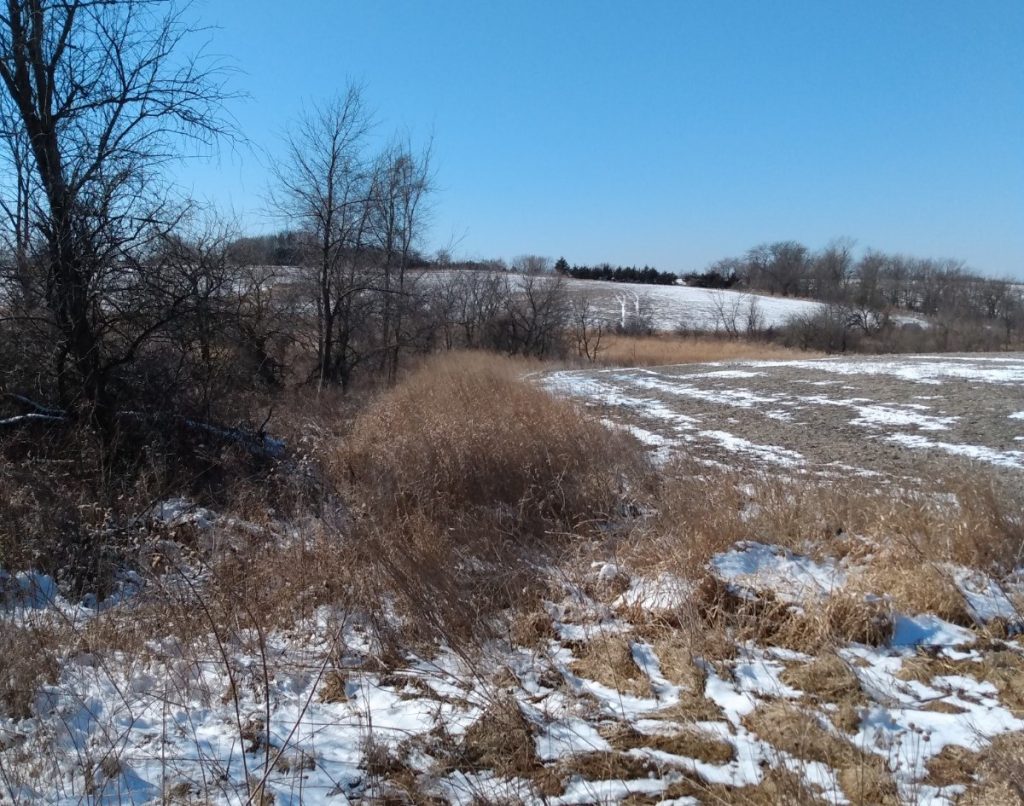
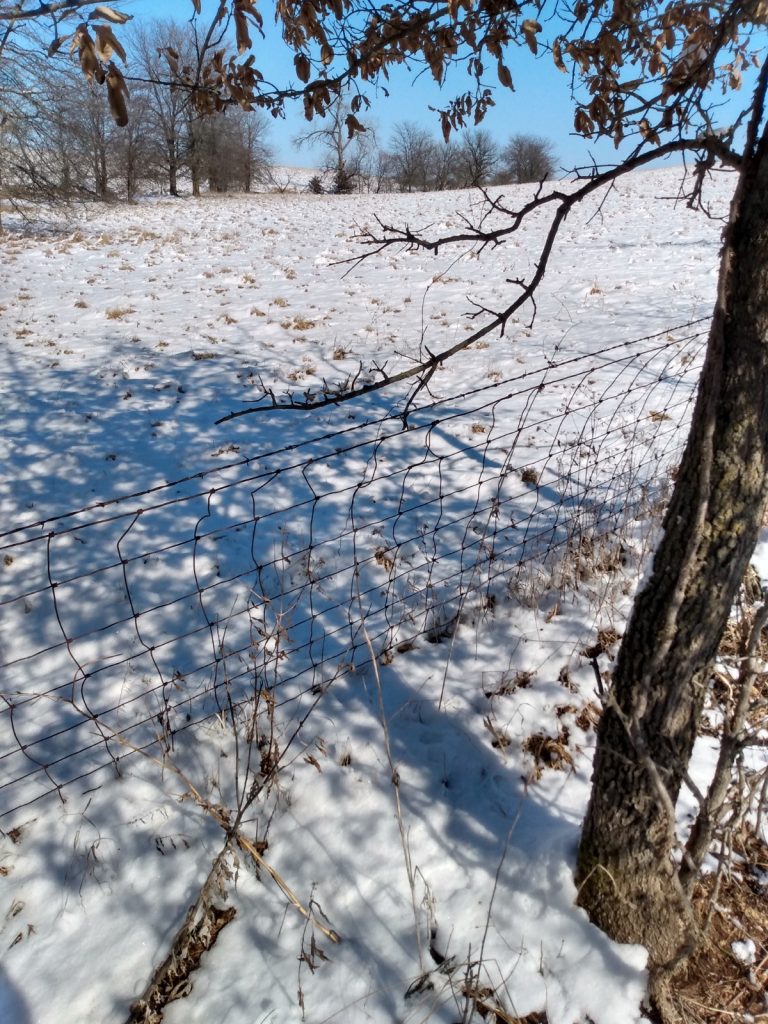
3/10/22 Over the past several days, I’ve spent some time with the chain saw doing some work at my cabin farm. I also overseeded one food plot using the frost seeding method with clover.
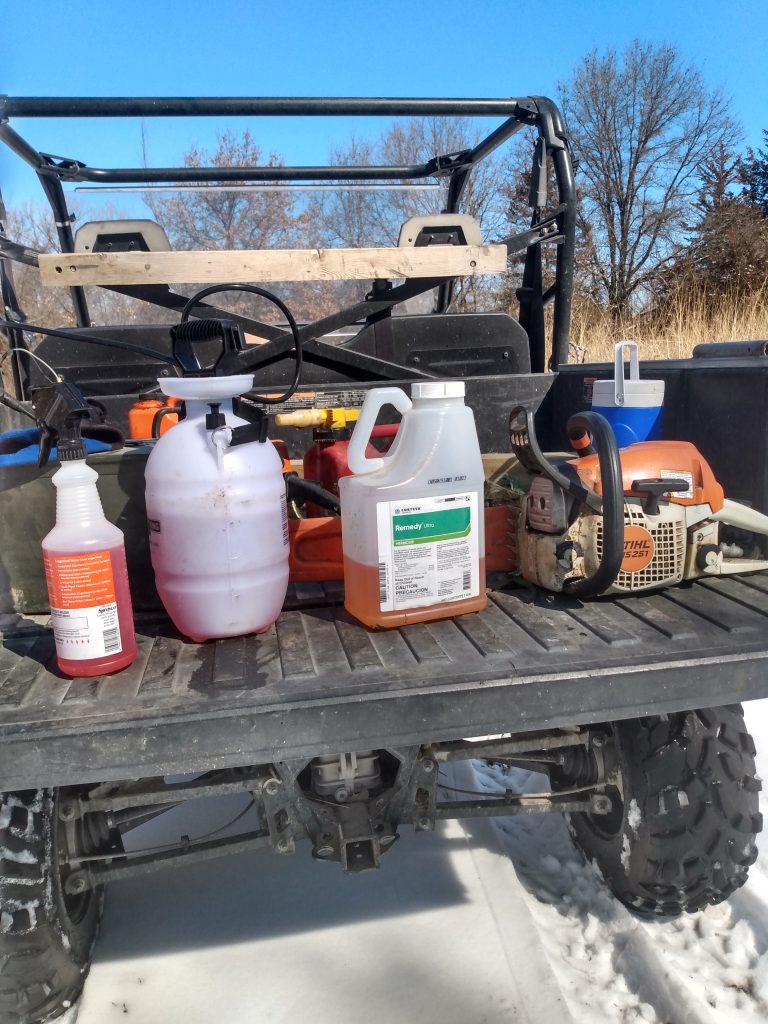
So, there seems to be some debate as to the best method on how to make a property thicker, to create cover or bedding cover that is. Should you just cut trees down? What about the hinge cut? What about girdling or hack and squirt? Some You Tube stars seem to think is has to be one way or the other, or they have an angle to why they have the best way. My thoughts are this, I’ve seen the way deer like their thicker spots in the woods, where they like to bed, and all I’m trying to do is replicate what they prefer. That’s really it. So, cutting down species of trees or trees that are curved or bent will immediately open up the overhead canopy allowing sunlight to the forest floor so that new young growth can come up in the form of browse, brambles, etc. If that tree is an unwanted species (for me that’s honey locust, black locust, or shagback hickory…maybe hackberry), then I will treat the stump with Remedy so that the tree doesn’t come back.
The problem with cutting down those trees is the potential to make the area too thick too fast. I have some areas where I am literally taking out 95% of the trees (like groves of hickory). If I were to drop all those trees, you wouldn’t be able to walk through at all, it gets too thick too fast and deer won’t even use it. That’s where girdling comes in. In those areas, I can run my saw around the tree, treat the girdle with Remedy, and the tree dies but without creating an imprenetrable mess for me and the deer. The tree dies and falls piece by piece. An interesting note: I saw a You Tube star once claim that if you did this, that when the trees die and start falling to the ground a little at a time, that you are creating a huge safety issue from the falling stuff so bad that deer won’t use that area. Another example of overthinking and drama!
Then there are areas that I am only taking out some trees because there are more desirable trees in that area like walnut or oak, and the amount of cover is not adequate enough. OR, areas where I am harvesting a ton of trees but removing them from the woods. In both cases, I am left with no horizontal cover at all. In these areas, hinge cutting works great to cut out canopy, and then immediately create side cover.
So which is best? All of the above! A balance of opening up canopy to bring in light, along with horizontal cover on the ground through downed trees or hinges provides the best cover for deer. And they love it.
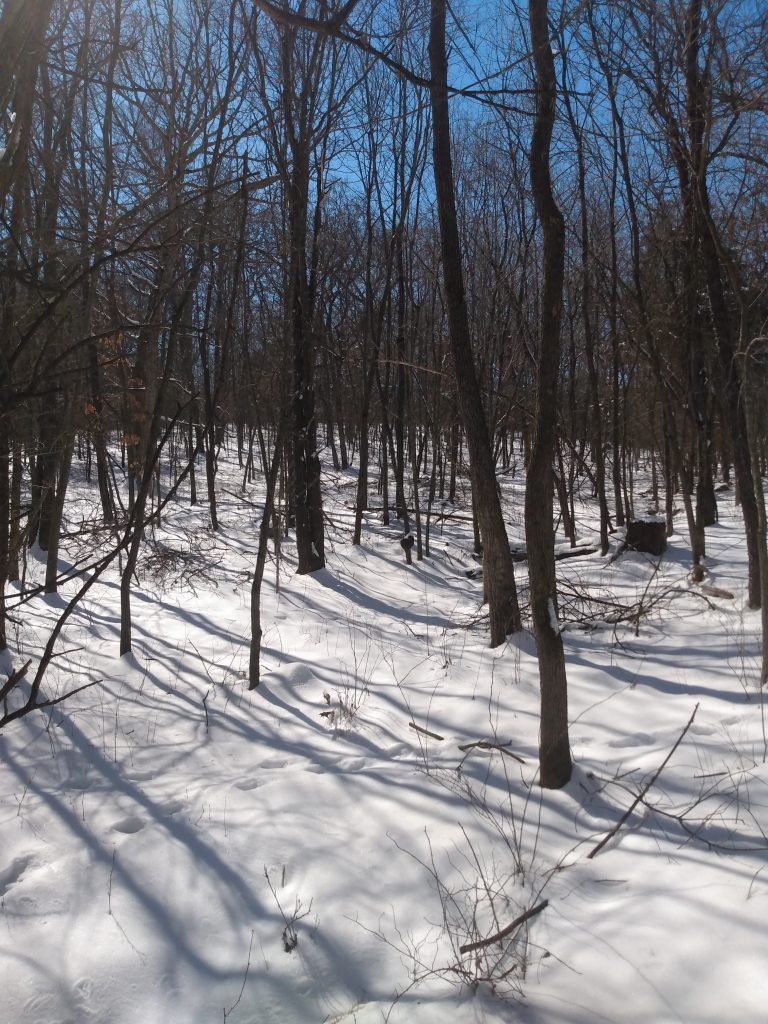
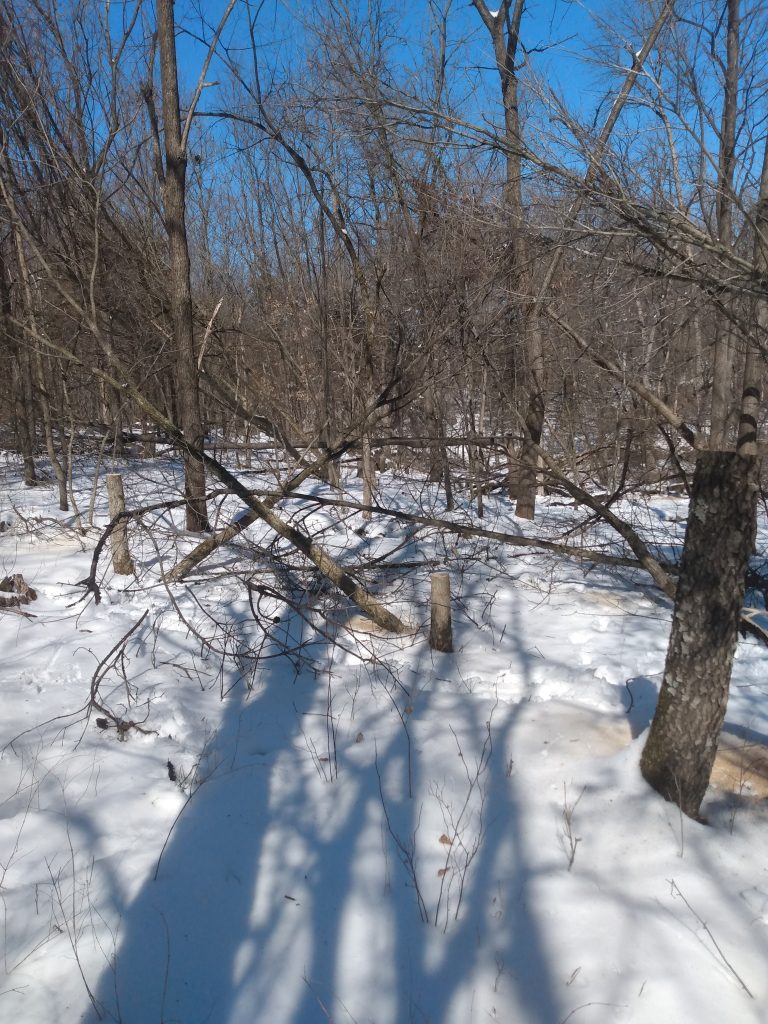
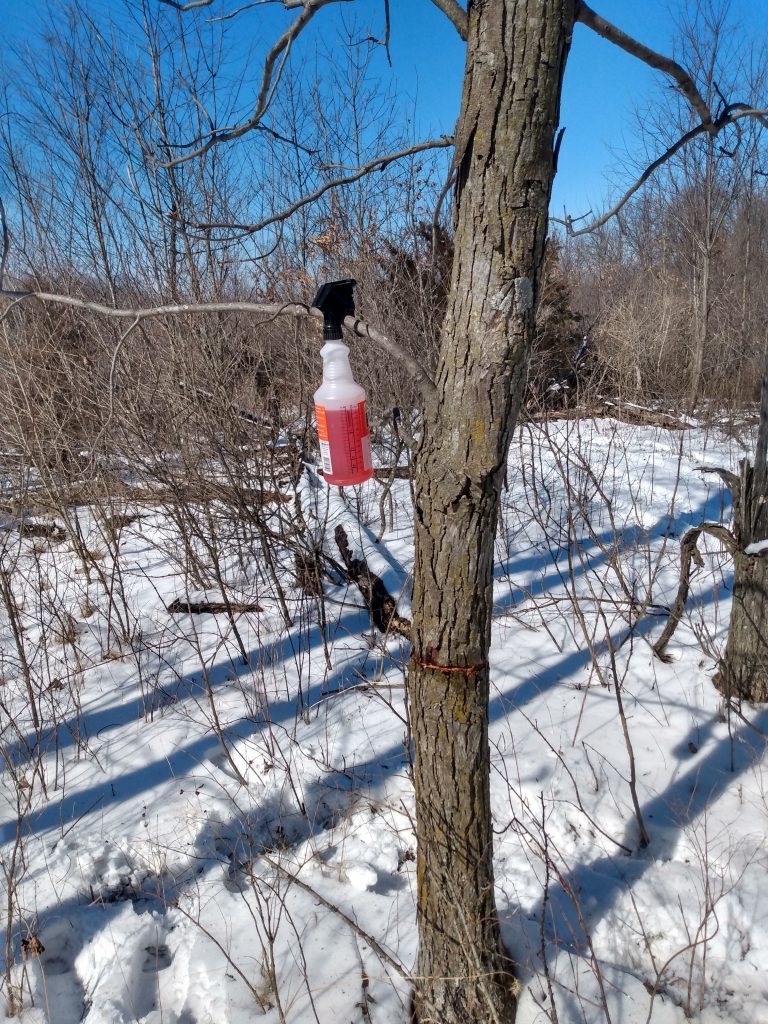
03/20/22 Spent some time this past week with an experiment where I cut dogwood bolts from clumps in the ditches around home, then just push them in the ground into areas out on the farm where I would like woody browse. In this case, it’s mostly wet areas that have reeds canary in it now. I have read, that up to 25% of the bolts will survive. That sounds low, but I did about 200 an hour. It’s very easy, just cut the bolts, and then push them in the ground in the place you want. Very fast and easy. At 25%, with that many that I can do, it’s well worth the effort and free! I’ll then go back in later spring and spray the grasses so that they won’t compete with the new bolts. Clethodim of Fusilade DM works good for this.
03/28/22
Did a ton of habitat work on the cabin farm the past few days. Mostly just continuing with more perimeter trails and creating pockets of cover.
So, in explaining a perimeter trail!!! What I have found, or observed, is that when you have a thicker piece of timber, thick enough that walking through it can be difficult at times, like a nasty bedding area with hinge cuts, and a lot of what I would call side cover, that deer often times like a nice easy path to walk down where they can go in and out of that cover easily. This seems like it allows them easy access to the cover they want, yet gives them diversity within the thick cover. I’ve observed this naturally and when hunting parcels that have been logged. So, all I’m trying to do is repeat what I have observed that really works well to funnel deer past a stand or two. I call it a perimeter trail because I’ll take a thick stand of cover, or make a thick stand of cover, then cut a trail around the outside edge of it where I can locate stands or transition plots to hunt over. This allows me to hunt the thick cover without going into it and burning it out. Access to stand sites are great, and it allows me to hunt the downwind side of the cover for any wind direction.
I’ll make the trails winding through the cover just inside or on the edge of the cover, then place my stands so that I can shoot to that trail. Sometimes, I’ll locate a very small food plot (transition plot) with a mock scrape near the stand just as a way to attract deer within that stand locations round house. It works great. I’ll go ahead and put in my mock scrape right now so that I don’t have to go back later to put it in. Deer will use the mock scrape as soon as they find the branch hanging down. I’ll typically use an oak branch, or hedge apple branch because they last the longest. A vine can be used too, or cedar branch, or anything else really that you can hang down vertically. I’ve seen YouTube stars and others claim it has to be a vine, or rope…it’s all bullshit! Conveniently, so many times when these “stars” claim is has to be one thing or another, it just so happens they are sponsored by some product they can now sell you, or claim that they are some genious inventors of that method. Deer will scrape under any branch that I hang down where I want them too. Don’t buy into the bullshit!
Then, along that perimeter trail, on the inside of that cover, when I find a tree I want to release (you’ll hear this called timber stand improvement) I can then make a pocket of cover around that tree or trees creating a pocket of thick cover where deer can bed or browse all along that perimeter trail Perpendicular dropping trees along the trail also helps funnel deer past your stand.
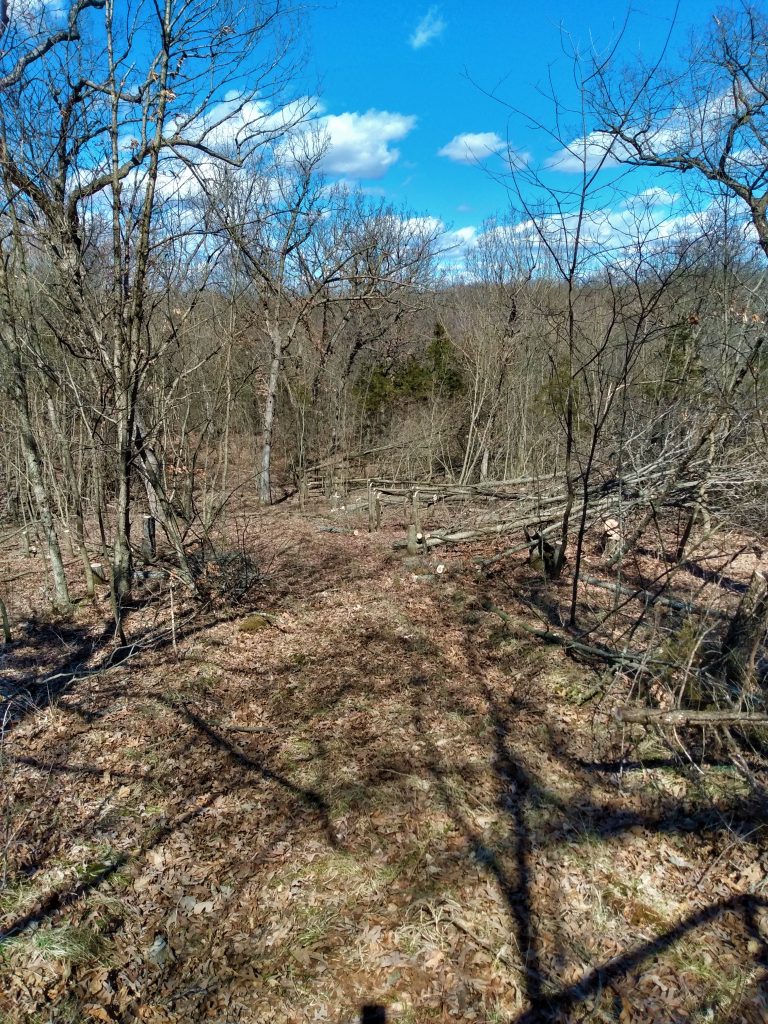
It’s hard to show in a picture how a perimeter trail should look. But it should be located on the perimeter of thick cover in a winding fashion. I like to find my tree stand spot first, taking into account access to that spot, then conveniently located or run the trail within bow range of that tree stand location. All habitat work should be done with a purpose. 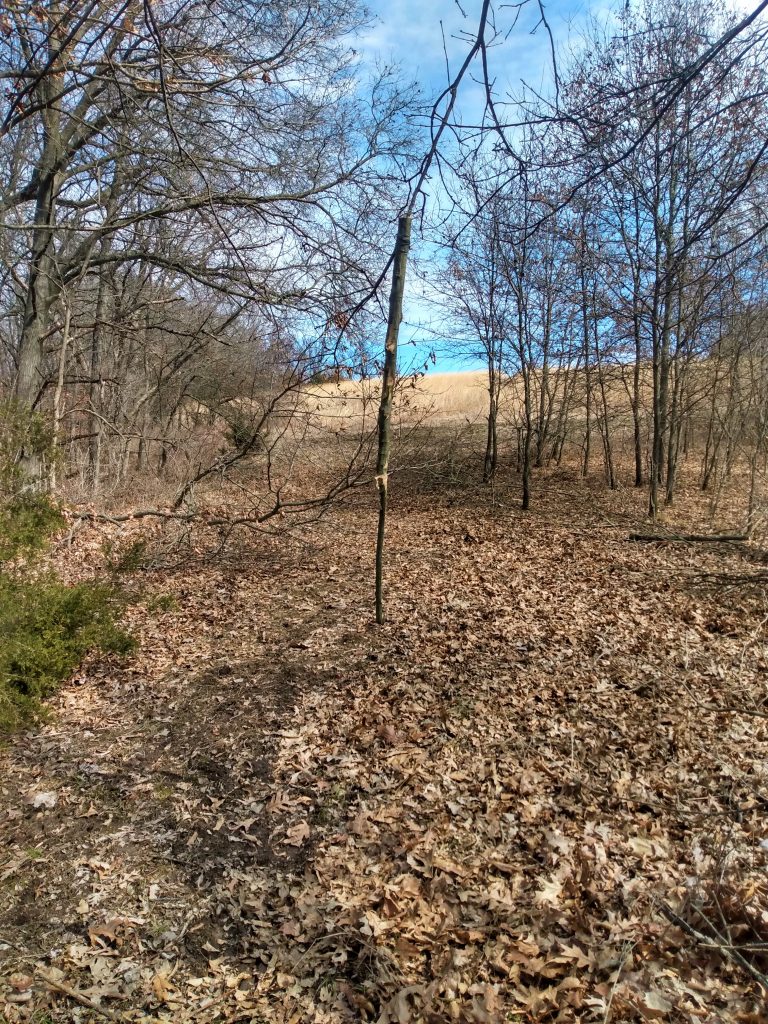
A mock scrape located near the end of one of the perimeter trails leading out to food. A perfect spot for a transition plot. I use an oak branch for this mock scrape.
I also did some burning. I don’t use burning a lot just because I don’t have a crew of people to do burns safely. But, I wanted to burn a draw behind the house to get rid of a ton of tree tops in that draw that were created by me cutting down a bunch of honey locusts the past couple years. The locust tops were hindering deer movement they were so thick, so I burned them out.
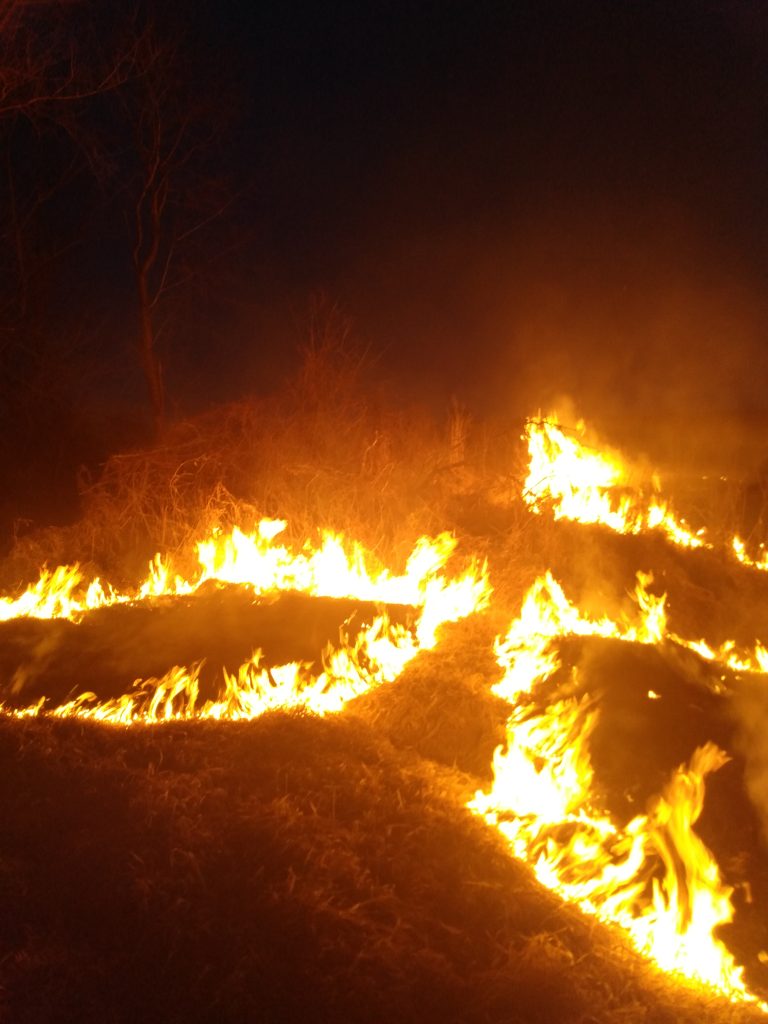
03/30/2022 Did a ton more work out at the cabin farm this week. Still finishing a bunch of cutting. Cut wanted to update a little. So, the perimeter trail is mostly done in one section of the farm with multiple branching trails. Some of the smaller trails leading through the thick cover are more in circles, others just weave in and out of cover and to the perimeter trail. The perimeter trail itself winds past three different stand spots, one for a southern wind, another a northern wind, and a new spot for an easterly wind. The south wind and now east wind spots I will also be putting in a very small interior plot meant to attract deer within bow range along my trail. A mock scrape will be at all three stands of course.
These trails are not to be used but only during the habitat season as I call it. Once my habitat work is done, I won’t use, look at, hang cameras, nothing on those trails. This keeps human pressure low on the farm. They are perfect for doing more habitat work in future years, or even getting a buck out at harvest time…but they will NOT be used at all other than that. I will mow them once a year to keep brush from taking them over and this will be done in late winter.
The small interior plot I’m putting in at the new stand required some tree clearing. Mostly bigger hickories. In the past, years ago, this work would have all been done by hand mostly. Cut the trees down and block them up into manageable pieces, then remove them by hand. Now, I have a more compact tractor that I use to help me to simply push the tree to the side. These plots are very small, maybe 10 yards wide, 20-30 yards long. They are not meant to feed deer per say, but more of a focal point for deer to come by, nibble a bit, use the scrape, then bed back down. Good all day spot!
Because of this, the plots do not have to be perfect. Once the trees are removed, then come the stumps…I’ve found the best way to remove the stumps is to not remove them at all. Just cut them flush to the ground as you can, treat them so they don’t resprout, and in a few years they’ll rot sure enough. I’ll use a disc for tillage if needed and it rides right up and over the stumps. Been doing this for ever and it works. Don’t waste a bunch of time and money buying implements or hiring people to remove or grind down stumps. Unless you have unlimited time and money!
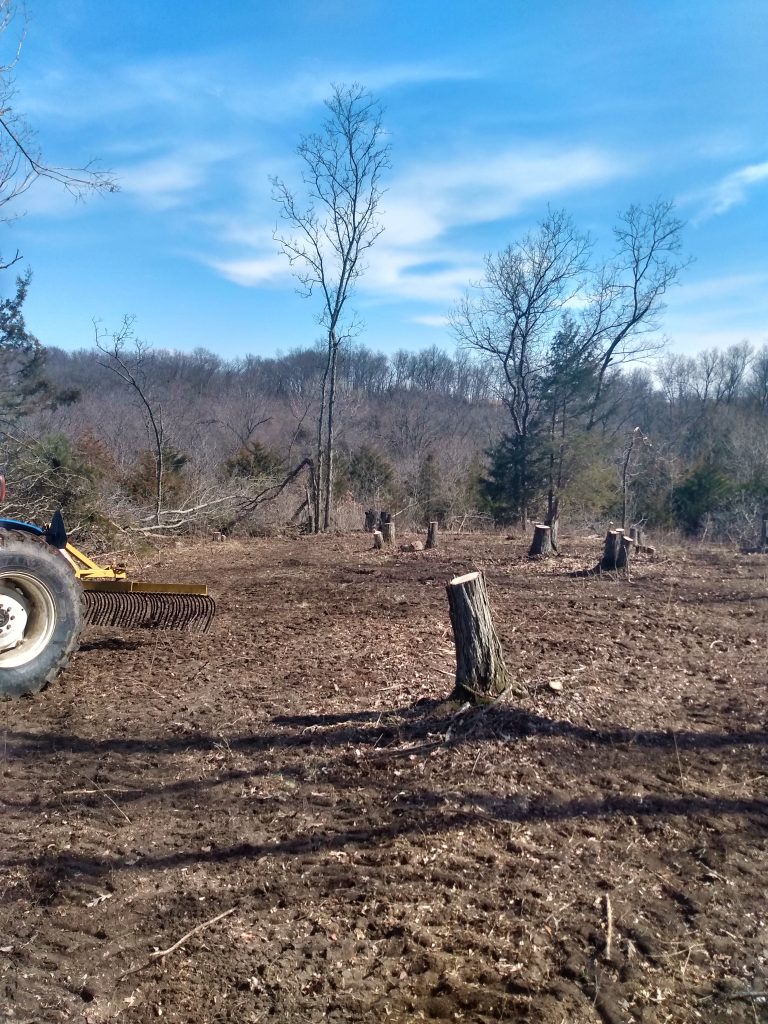
This plot is about 10-20 yards. The stumps will be cut off, treated, but not removed. 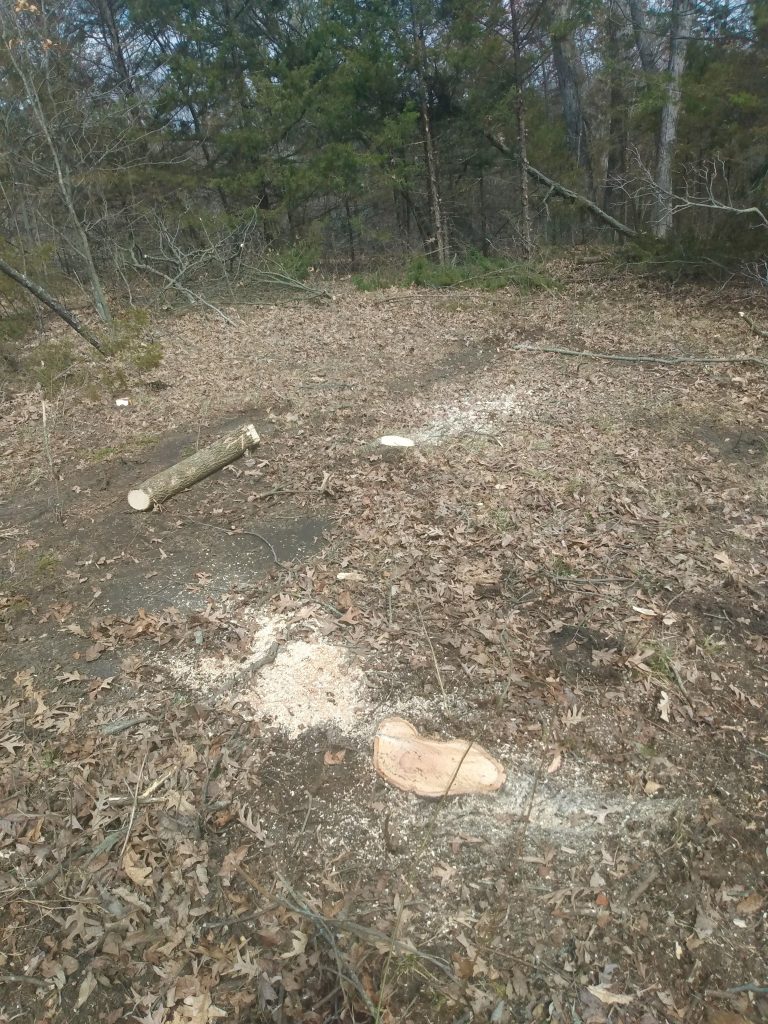
Cut stumps flush and treat. A disc will ride right over them. 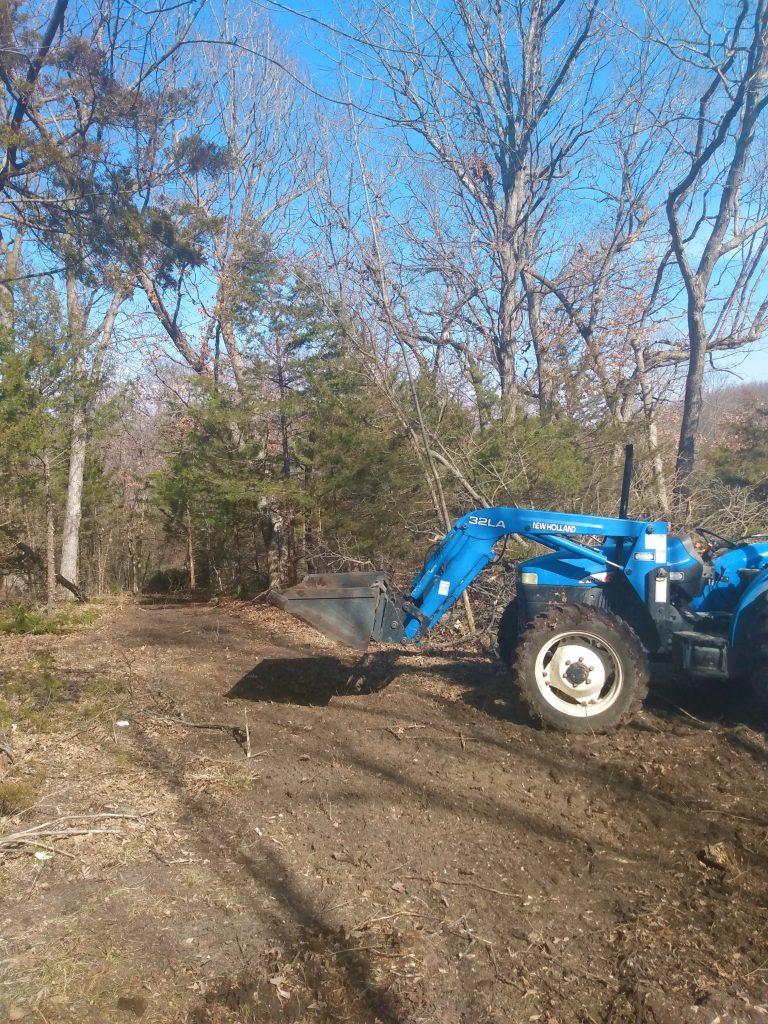
The perimeter trail entering the plot is done in this area. 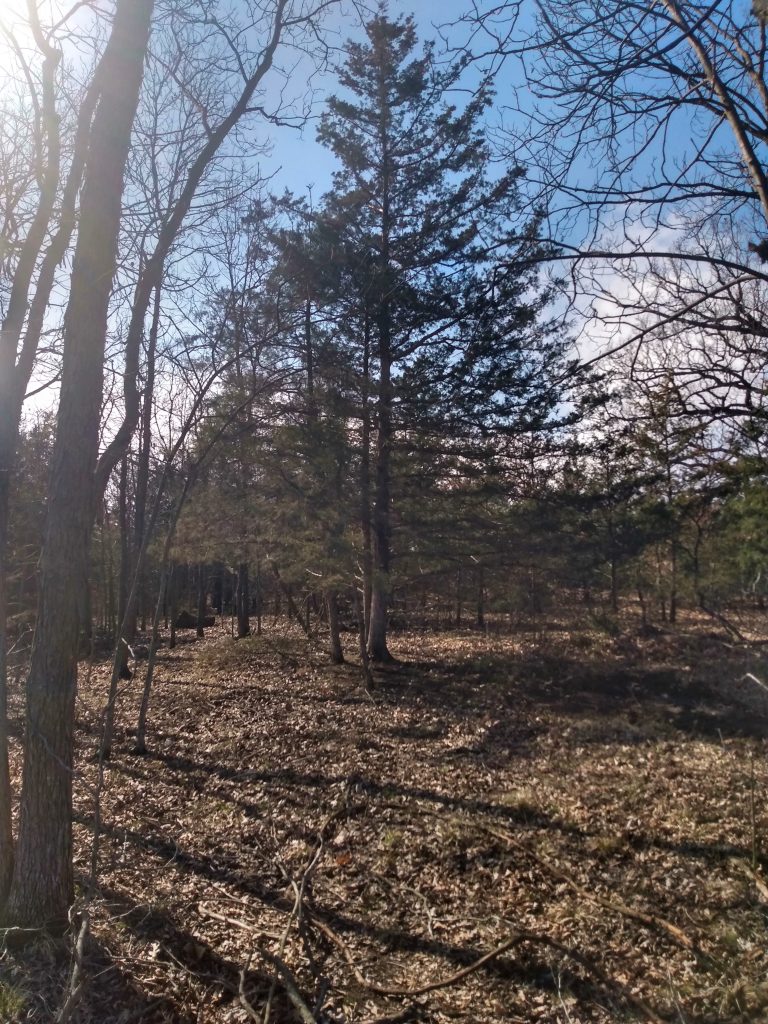
I needed an east wind spot on the farm. I picked this tree out, planned the interior plot, perimeter trail, all first before starting the work. This cedar offers perfect access to the stand, perfect for an east wind, and it allowed for the trail swinging by within range plus the food plot.
You’ll see that in some of the pics I have used a land rake to remove debris from the plot. I’ve done this because I already have on of these. If you don’t, you can leave smaller debris right in the plot. It won’t hurt a thing. Deer don’t care!
4/11/22 Well, habitat work for the year is coming to an abrupt end. I have been hitting it hard this year doing a ton of cuttings, forest improvement work (releasing oak and walnut mostly), cutting a ton of hickory, creating trails through cover, and today I finished the season up by burning a draw behind the house.
The goal with the burn was to burn down a bunch of tree tops that I had pushed into that draw a few years back already. Instead of taking the time then, and all the work, to make sure the tops didn’t create bottlenecks and ways the deer couldn’t travel the draw, I just cut them and pushed them years ago with the intention of always coming back and burning. The burning won’t necessarily burn all the tops down to nothing, but it will burn most of the smaller branches and the tops will then settle making it easier for deer to travel. I had tried burning this draw a few weeks back, but it was too cold and wet. Burning went good today.
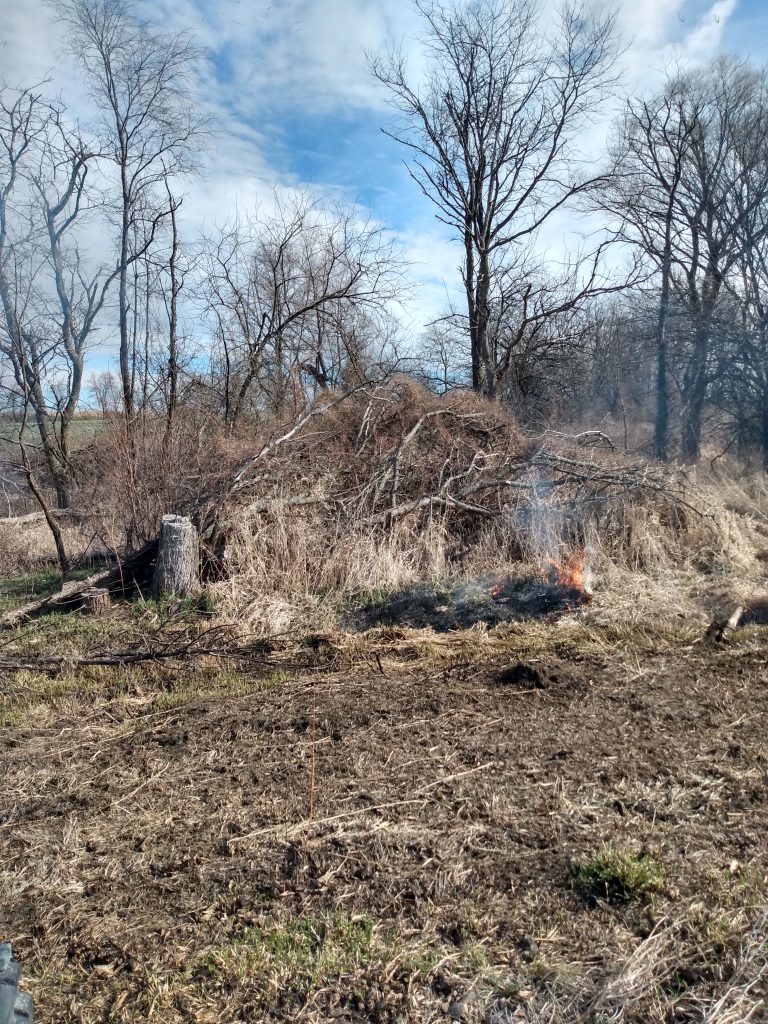
These brush piles, if too thick, will deter deer from using the area. I’ve noticed that deer won’t use this draw maybe as good as they did before I did all the cutting. But, after this burn today, new woody browse, briars, grasses, and other good cover type species will explode in this area. This pile might still be there, but way more settled down and less “blocking”. 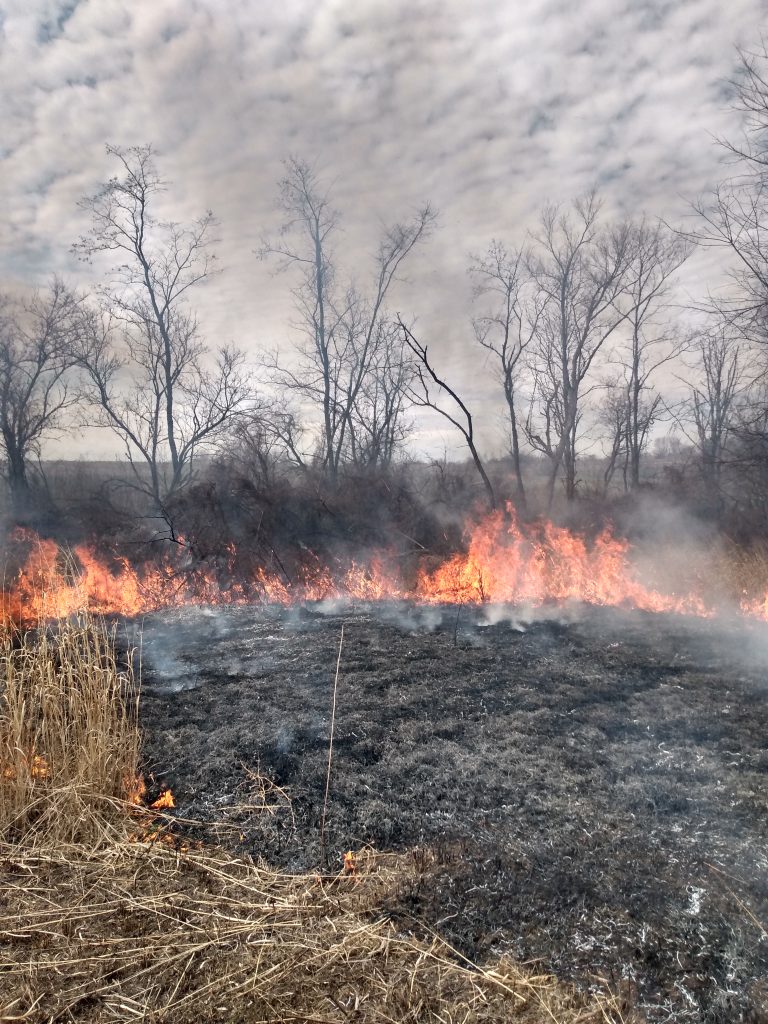
The grass is the fuel for the fire, when the burn was done, most of the brush went with it. I don’t burn a lot mostly because I’m cautious and afraid of something getting away, but it is a great tool when used correctly.
The only other thing I did since the last post was a consultation in Northern Missouri. It was a really pretty mixed agriculture farm with a ton of potential. The land owner I feel is a good hunter, but thought it wise or prudent to get my opinon before going nuts with habitat and other work. It was a great day, and as is always the case, by the end of the day I could feel myself getting exited for this hunter/landowner. A great habitat and hunting plan was put in place for this nice farm!!!
I think that’ll be all for the off-season habitat blog. I have spring planted soybeans and corn going in soon. I hope even though this blog isn’t very long that you maybe picked up a thing or two.

